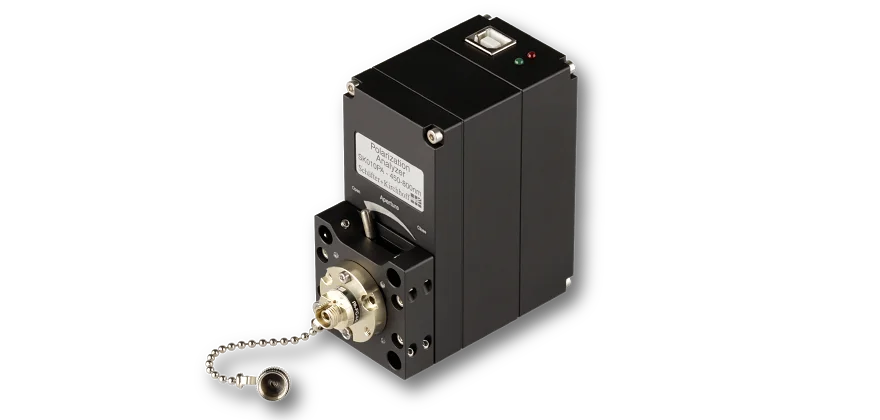Polarization-maintaining fibers
What makes PM fibers maintain the polarization?
In polarization-maintaining single-mode fibers (PM fibers), the fiber symmetry is broken by integrating stress elements in the fiber cladding. The light is then guided in two perpendicular principle states of polarization with different propagation constants – the fast and the slow axis. The linear polarization of light coupled into one of these axes is maintained. The linearly polarized laser radiation is conventionally coupled into the slow axis because of its lower sensitivity to fiber bending.
If light is coupled into both axis then the resulting polarization is elliptical (if the coherence length of the source is larger than the phase difference). Strain and temperature variations, however, change this arbitrary elliptical state. Thus it is important to exactly align the polarization axis of the laser source with the polarization axis of the fiber e.g. using the Polarization Analyzer SK010PA.
Different types of polarization-maintaning fibers are designed depending on the geometry of the stress elements: “PANDA“ fibers, “Bow-Tie“ fibers or “Oval-Inner Clad“ fibers.
The polarization-maintaining fiber cables made by Schäfter+ Kirchhoff typically use fibers of type PANDA. The slow axis is aligned with the index key of the FC type fiber connector with high precision (<1.5°).
The fiber cables made by Schäfter+Kirchhoff typically have a polarization extinction ≥ 200:1 (23 dB) or ≥ 400:1 (26 dB) for λ ≥ 780 nm (except for fibers end caps).
The fiber cables with end caps made by Schäfter+Kirchhoff typically have a polarization extinction ≥ 200:1 (21 dB) or ≥ 400:1 (23 dB) for λ ≥ 780 nm.

Polarization-maintaining single-mode fibers guide coupled radiation in two perpendicular principle states, the fiber polarization axes (also called the slow and fast axis, see figure on the left).

- Good alignment: If the connector index key is in axis with the slow axis of the fiber and the laser polarization axis the alignment is good
- Bad alignment: If the connector index key is in axis with the slow axis of the fiber but the laser polarization axis is rotated the alignment is bad and the resulting output beam is arbitrarily elliptically polarized

Characterizing Polarization-maintaining Fibers (PM Fibers)
More information on how Schäfter+Kirchhoff characterizes PM fibers can be found here.
Coupling into the fast axis of a PM fiber
Conventionally the linearly polarized laser radiation is coupled into the slow axis because of its lower sensitivity to fiber bending.
You can also couple light into the fast axis of a PM fiber cable. However, the bandwidth of the fiber is severly reduced and it is only advisable to couple in a wavelength close to the cut-off.
Please also keep in mind that Schäfter+Kirchhoff only specifies and tests as well as supplies measurement data for radiation coupled into the slow fiber axis. Measurement and test result will vary for coupling into the fast axis.

Polarization Analyzer
More information of the application of the Polarization Analzer can be found in the Technotes section as well as on the product page. There is also an article that gives a good overview.